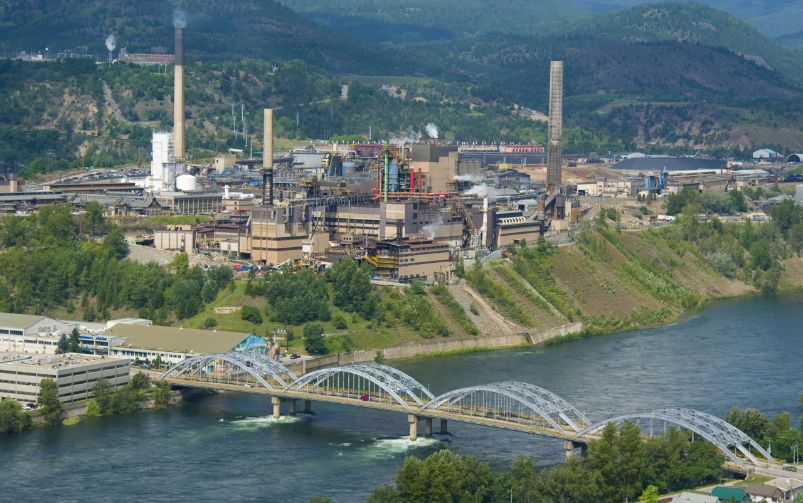Dysprosium, one of the seven rare earth elements impacted by China’s recent export restrictions, is used in neodymium-iron-boron magnets, which are crucial components in wind turbines and electric vehicles. Courtesy of Science Photo Library.
Welcome back to your weekly mining news recap, where we catch you up on some of the news you may have missed. This week’s headlines include Defense Metals filing a prefeasibility study for its Wicheeda rare earth project in B.C., U.S. President Trump moving to revive American coal production and Barrick Gold eyeing a name change amid copper refocus.
Wesdome Gold Mines plans to acquire junior exploration company Angus Gold for a deal valued at $40 million. As part of the deal, Wesdome would acquire Angus Gold’s Golden Sky project near Wawa, Ontario, which is next to Wesdome’s Eagle River underground operation. Approval from Angus Gold shareholders and the Ontario Superior Court is required, with the transaction expected to close in the second quarter of this year. The deal is notable as it involves two Canadian mining companies led by women CEOs.
Following multiple tariff escalations between China and the U.S., China imposed export restrictions on seven types of rare earth elements (REEs) on April 4, affecting all countries. This has prompted U.S. manufacturers to consider new sources of REEs as China controls 87 per cent of global refined REE production. While Canada is not yet a major producer of REEs, it boasts significant reserves and hosts several early-stage projects focused on metals like samarium and terbium, though many face extended development timelines.
Prime Minister Mark Carney aims to position Canada as the world’s “energy superpower” by introducing a plan that includes establishing a Major Federal Project Office, responsible for making decisions on major projects within two years, as reported by Bloomberg. The office would eliminate the duplication of environmental assessments. Carney also shared plans to expand the critical minerals exploration tax credit to include costs for technical studies, as well as modifying the clean manufacturing tax credit to support brownfield site development.
Defense Metals has filed a prefeasibility study, prepared by Hatch and SRK, for its wholly owned Wicheeda rare earth element deposit located around 80 kilometres northeast of Prince George, B.C. According to the company, the deposit contains high concentrations of neodymium and praseodymium—critical minerals used in wind turbines and electric vehicles that are in strong global demand.
On Tuesday, Trump signed several executive orders aimed at revitalizing the U.S. coal industry, as reported by The Associated Press. The orders allow older coal-fired power plants to remain operational instead of being shut down. Additionally, Trump has instructed federal agencies to locate coal resources on federal lands, remove barriers to coal mining and also prioritize coal leasing on public lands. In addition, the president signed a proclamation granting coal-fired power plants a two-year exemption from federal mandates that aim to reduce emissions.
Barrick Gold is proposing to change its name to Barrick Mining Corp. as it shifts focus to copper, as reported by Bloomberg. Barrick’s gold production has dropped to its lowest in 25 years. The company is investing US$7 billion to develop Reko Diq, a major copper-gold project in Pakistan that is slated to begin operations in 2028, while also expanding the Lumwana copper mine in Zambia that has the potential to become one of the largest in the world. A shareholder vote on the name change will take place on May 6.
U.S.-based biotechnology company Allonnia recently demonstrated its D-Solve process, which uses a recyclable biosolution containing natural microbes that can selectively dissolve gangue minerals from flotation concentrates, upgrading concentrates of minerals like nickel, copper and lithium, as reported by Ailbhe Goodbody for the March/April issue of CIM Magazine. In a demonstration at SGS’s metallurgical lab in Lakefield, Ontario, with nickel-sulfide concentrate, the biosolution improved nickel grade by 18 per cent and reduced magnesium impurities by 40 per cent, showcasing its potential for broader applications in various mineral concentrates.
Winsome Resources partnered with carbon removal registry Isometric earlier this year to advance its carbon sequestration strategy for its Renard site in Quebec, while also signing memoranda of understanding with three companies to test various carbon dioxide removal technologies at the site, as reported in the March/April issue of CIM Magazine. The site, previously used for diamond mining, could potentially become the first in the world to have a large-scale dual-purpose facility for both lithium production and carbon management.
That’s all for this week. If you’ve got feedback, you can always reach us at editor@cim.org. If you’ve got something to add, why not join the conversation on our Facebook, Twitter, LinkedIn or Instagram pages?




